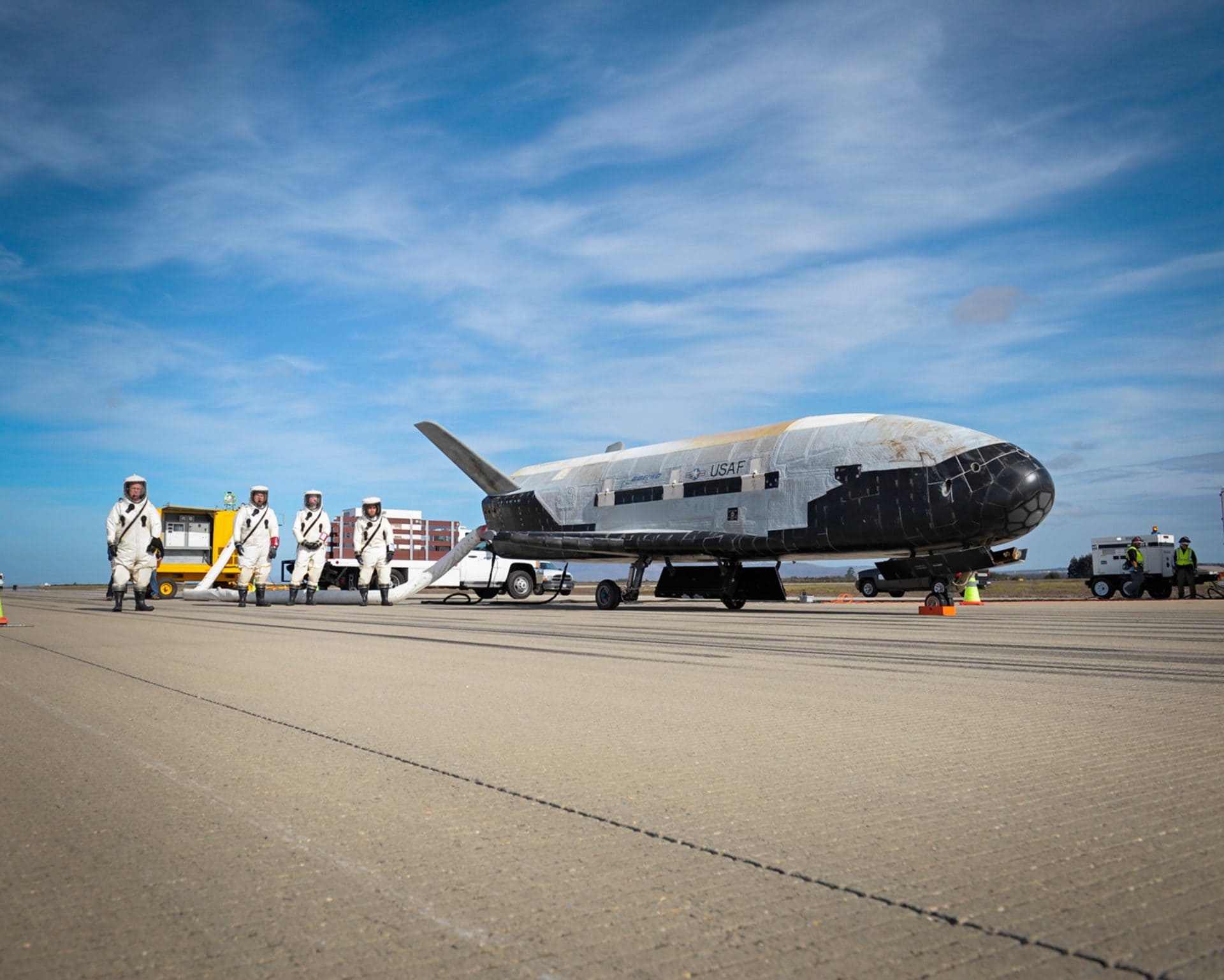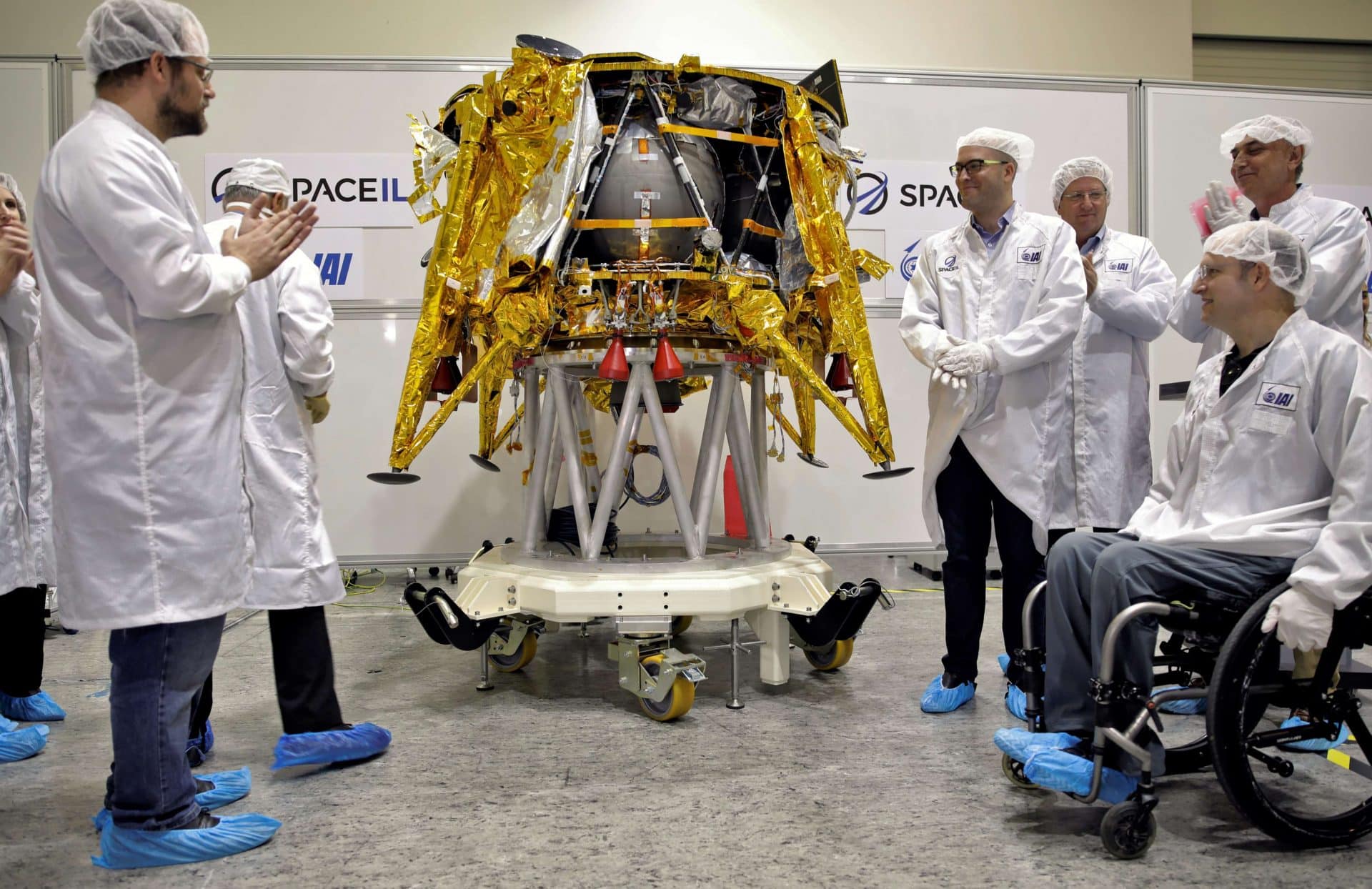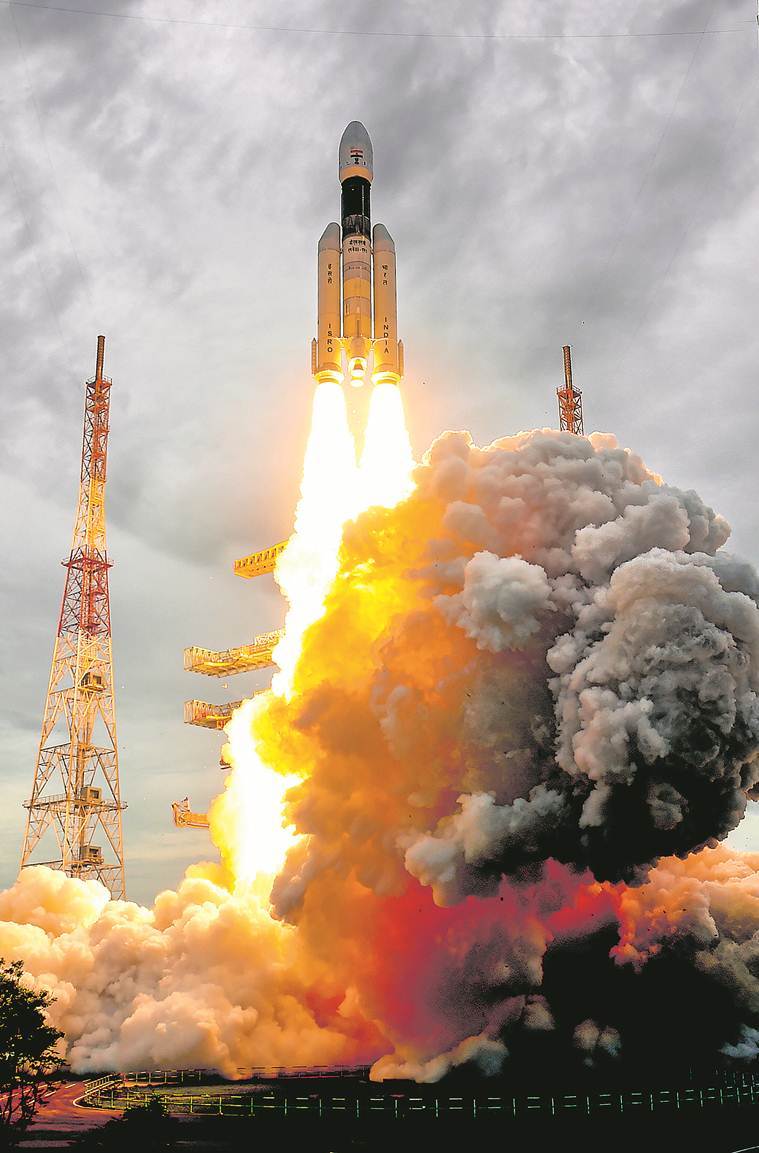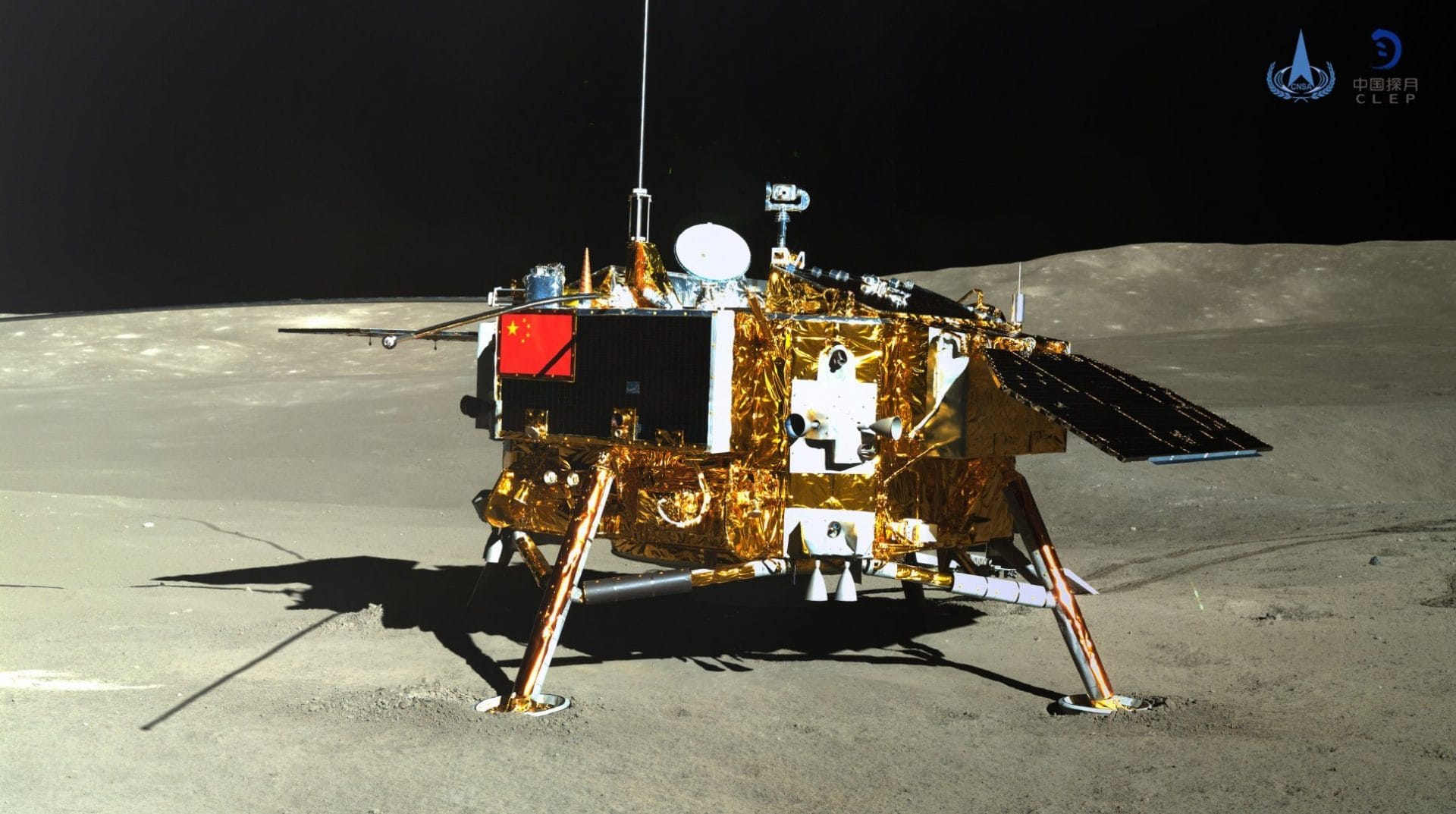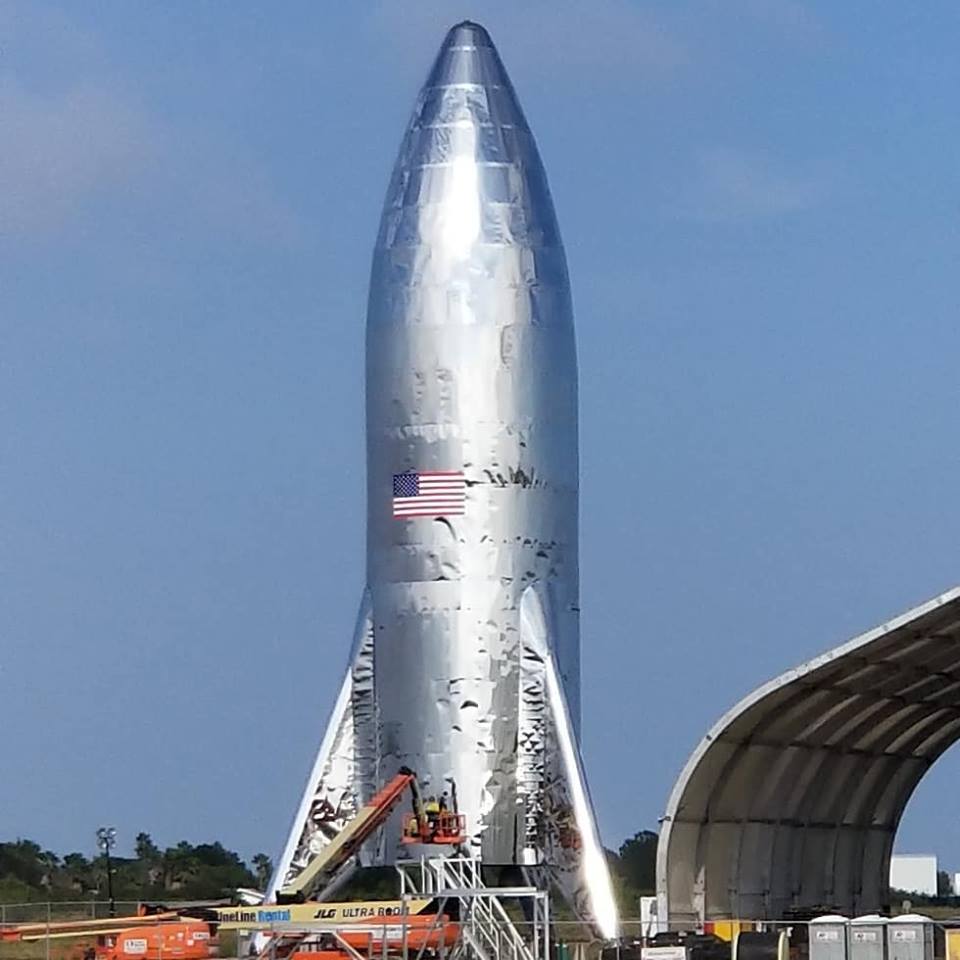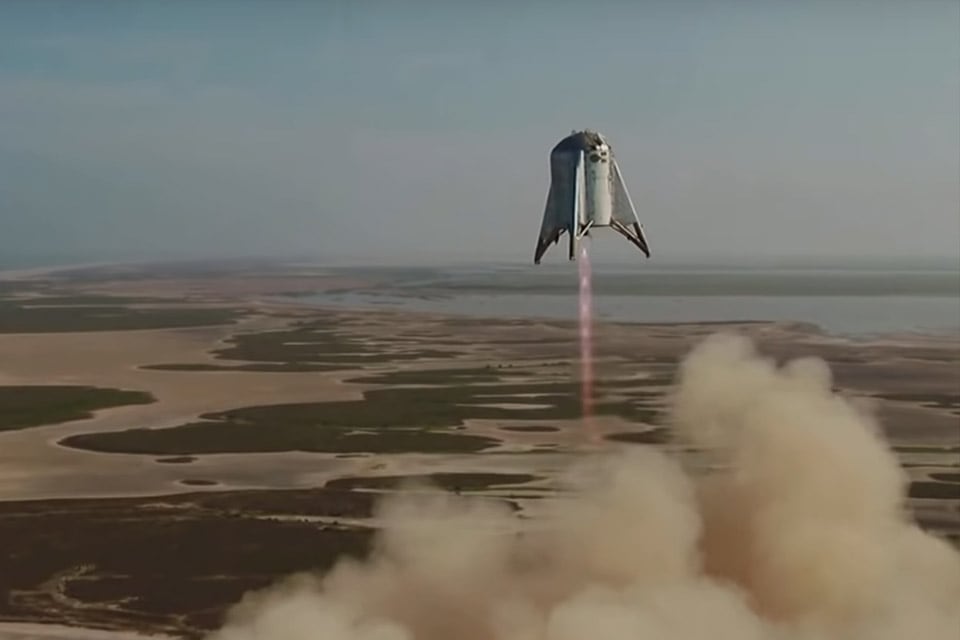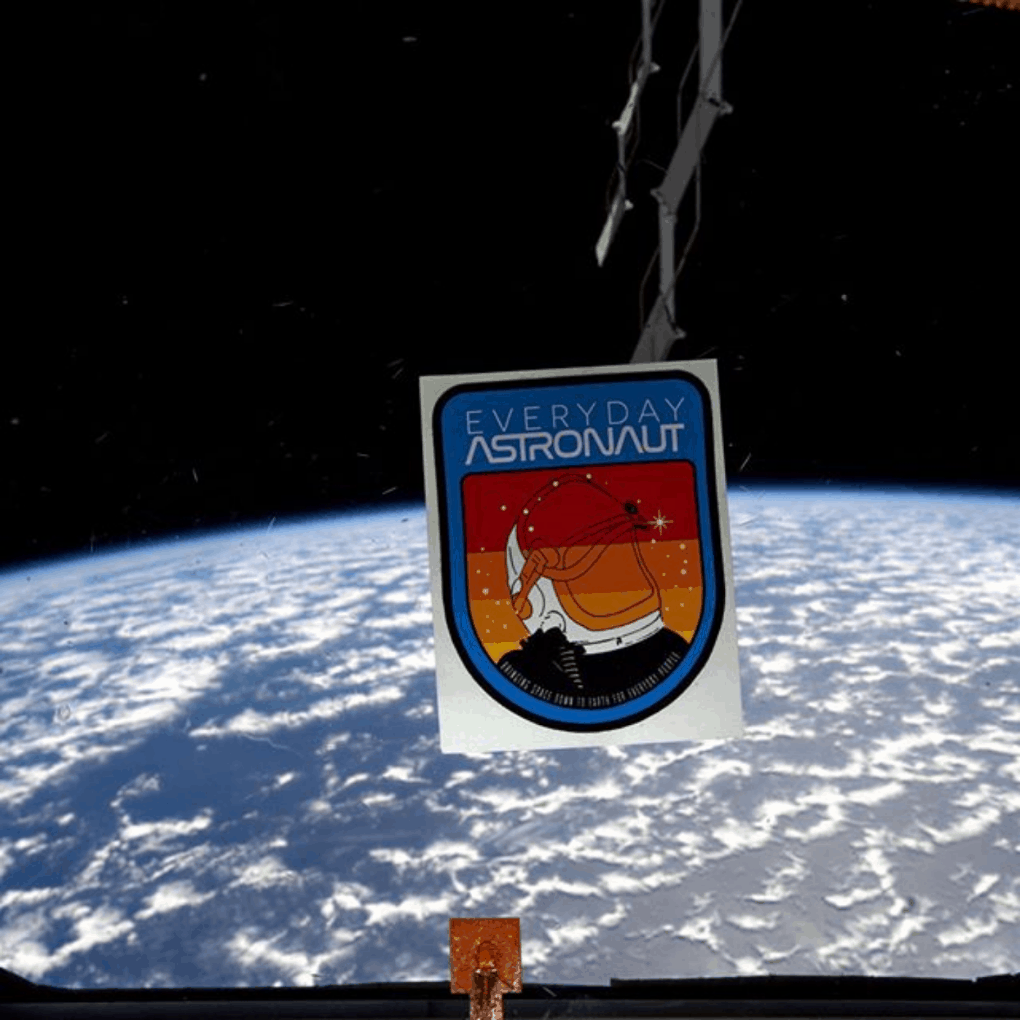Please keep in mind that these are nothing official… yet…, but are just a time to look back on the awesome science, discoveries, engineering, and achievements that have been made in the last year. Without further ado, I present: the 2019 Astro Awards!
Welcome to the third annual Astro Awards, the ultimate honor in space awards. Each year we pick our favorite space moments and award the winner the much-coveted LEO trophy. The Astro Awards is our chance as the general public to lift up, celebrate, and thank those who dedicate their lives to furthering our knowledge and understanding of the world we live on and our place in the vast universe.
2019 was another super exciting year for spaceflight and space science. Although it wasn’t as jam-packed with launches as 2018, and we didn’t get to see humans flying on the commercial crew program from US soil or as Jim Bridenstine would say “launch American astronauts, from American soil, with American rockets,” BUT it still brought us a lot of really cool things!
And again, we’ll put these in order leading up to what’s the most significant event according to our polls, but don’t put too much weight on the order, at the end of the day, it’s really just for fun; not only do we factor in scientific significance, but ALSO cultural impact that helps get people thinking about space and spaceflight.
Great people whom we lost
Now before we get started, let’s take a few moments to reflect and remember some great people, missions and programs we had to say goodbye to this year. Starting with a few important people who made an impact in space history:
Geraldyn Cobb (US Aviator / US Astronaut Candidate) March 5, 1931 – March 18, 2019
Owen Garriot (US Astronaut) November 22, 1930 – April 15, 2019
Chris Kraft (US NASA Mission Manager) February 28, 1924 – July 22, 2019
Sigmund Jahn (German Cosmonaut) February 13, 1937 – September 21, 2019
Gennadi Manakov – (Russian Cosmonaut) June 1, 1950 – September 26, 2019
Alexei Leonov (Russian Cosmonaut ) May 30, 1934 – October 11, 2019
To those of you who lost loved ones this year, our thoughts and prayers are with you. Their work has helped shape an industry, expanded our horizons as humans, and literally changed our understanding of our place amongst the stars. They will forever be remembered and their legacies will live on.

And although not even close to as tragic as losing a loved one, we did see the end of some missions and hardware, planned or not, that I thought would be worth sending off:
MK-1 Nose Cone (unintentional sailboat impersonation)
MK-1 prototype (Rapid Unscheduled Disassembly)
SLS tank (Rapid Scheduled Disassembly)
DM-1 Crew Dragon Capsule (Rapid Unscheduled Disassembly)
STP-2 Core (Yeet Mode Activated)
Arabsat Core (Unworthy Sea Legs)
Beresheet Lander (Unintentional Lunar Impactor)
Chandrayaan 2 (Accidentally Impersonated Beresheet)
Delta IV Medium (Done flying solo)
Iridium First Generation Network (End of Service)
Opportunity Rover (“My battery is running low and it’s getting dark”)
So we saw lots of crazy stuff happen this year, said goodbye to the Delta IV medium as it will only fly in the heavy configuration from now on, the moon was a big bully this year which we’ll talk more about in a second, and SpaceX lost some hardware.
Those poor Falcon Heavy cores can’t catch a break – the biggest heartbreak was the Arabsat center core that landed successfully but was lost at rough seas. Hopefully, we won’t see that happen again since SpaceX’s little core holding robot, the Octograbber, is now able to hold Falcon Heavy center cores as well as the usual F9 cores.
And even though we sent Opportunity off in last year’s Astro Awards, how can you not say goodbye one last time. Especially after its last words were “My battery is running low and it’s getting dark”.
Ok, but we’ve got a lot to talk about from 2019, so let’s start this year’s show with some honorable mentions.
Honorable Mentions
X-37B:
The US Air Force’s secret little Boeing X-37B orbital test vehicle completed its 5th mission on October 27, 2019, after spending a record-breaking 780 days on orbit! While we know very little about what it’s doing up there, it’s super cool to see a vehicle spend so much time on orbit and return safely!
All Women Spacewalk:
Humans have been doing spacewalks for 54 years now and unbelievably it took until 2019 for two women to be assigned a mission together. Thank you, Jessica Meir and Christina Koch for getting out there and replacing a battery charge/discharge unit. You rock and it’s about time this happened to set good examples for people everywhere.
Beresheet Lander:
In an attempt to win the Lunar X Prize, Israel Aerospace Industries and SpaceIL built a washing machine-sized 150 kg lander. This was hoping to be the first privately funded spacecraft to softly land on the moon.
Unfortunately, a gyroscope inside the inertial measurement unit failed during the approach which caused it to land a little too fast, ok, way too fast at 139 m/s vertically and 947 m/s horizontally, turning the lander into an unintentional impactor. Small details… but it was still a very impressive feat and made Israel only the 4th country to attempt a soft landing on the moon, and made the Beresheet lander the first private vehicle to orbit the moon!
Chandrayaan-2
The moon was a big ole meany this year, destroying another lunar lander as it attempted a soft touchdown. This time is was India’s Chandrayaan-2 that fell subject. Unfortunately, it maybe watched Beresheet too closely and wound up doing something eerily similar and it too became an unintentional impactor, hitting the surface at 50 m/s.
Had it landed softly, it would’ve made India only the 4th country to land softly. Although it wasn’t the first time India touched the moon as Chandrayaan-1, which was an intentional lunar impactor, already accomplished that feat in 2008.
Overall it was an awfully impressive mission considering it was all entirely run by ISRO. The launch vehicle was ISRO’s own vehicle, the whole mission was done for an astonishingly cheap price of around $141 million USD. And importantly, the orbiter is still successful. We look forward to Chandrayaan-3 which is already being built and will hopefully launch at the end of 2020.
Light Sail 2
This year the Planetary Society launched an entirely crowd-funded spacecraft that can ride solar radiation and solar wind to change its orbit. It flew on SpaceX’s Falcon Heavy STP-2 mission and has successfully raised its orbit using just photons. The Lightsail project is an awesome technology demonstrator and it’s even cooler that’s crowdfunded by people like me and you!
Hayabusa 2 shooting asteroid:
We talked all about the awesome Hayabusa 2 mission from JAXA in last year’s Astro Awards. This year they did something so freaking awesome with it, I had to mention it quickly. Hayabusa 2 shot asteroid Ryugu with a copper projectile that was packed with explosives! So yeah, Japan’s out there shooting asteroids in 2019, what’d you do this year?
Those are just a few of the cool missions that happened in 2019, now onto the main events:
STP-2/Falcon Heavy:
STP-2 was perhaps one of the most complex missions ever. Period. I know this sounds like a bunch of hyperbole, but seriously. Here’s what had to happen for this mission to be successful.
SpaceX put 24 spacecraft on a Falcon Heavy rocket, and then put them into 3 wildly different orbits that required a total of 4 separate upper stage burns, and meanwhile recovered over half of the rocket while pushing it to the extreme upper limits of what’s physically possible for the Falcon Heavy.
Maybe most nutty of all, this mission actually REQUIRED the success of the Arabsat – 6A Falcon Heavy mission from earlier that year in order to re-use the side boosters in a timely manner. I know this doesn’t seem like a big deal, but honestly, this mission was a masterpiece in mission planning, required several pirouettes of deployments, and overall was a magnum opus of what SpaceX is capable of doing.
The only thing that went wrong, but was kind of considered a Hail Mary, was the landing of the center core. Unfortunately, the intense mission profile demanded just a wee bit too much Delta V, leaving the center core with virtually no buffer for a successful landing. The center core wound up being pushed through reentry a little too spicy, overheating the thrust vector control systems that steers its engines and causing the rocket to miss the droneship. In a world where SpaceX has been nailing almost every single landing in the last 3 years, this seems like a major loss, but in a world where every other rocket still just crashes into the ocean, SpaceX still did something unbelievably impressive with the STP-2 mission.
Congrats to the team that helped orchestrate this mission, that was easily one of the most impressive missions I’ve ever watched!
K2-18B:
This is one of those scientific events that may have gone a little under the radar, but for the first time, researchers detected water vapor signatures on a freaking exoplanet 124 light-years away!
First discovered in 2015 by NASA’s Kepler Space Telescope, K2-18b is a super-Earth 8 times larger than our own planet orbiting a red dwarf star. The researchers then used data from the Hubble Space Telescope to analyze the host star’s light shining through the atmosphere of the planet, publishing their findings in 2019.
The results showed the molecular signature of water vapor, hydrogen, and helium! It’s just insane to me that we’re able to actually observe water vapor on a planet that’s over 100 light-years away!
With 8 times the surface gravity as Earth and higher radiation levels, it likely wouldn’t be a habitable planet for humans, if we could ever get there. But, it’s still extremely exciting to know water exists on other planets. Where’s the water, there very well might be life!
Congrats to the astronomers at the Center for Space Exochemistry Data at the University College London and the teams at NASA and ESA who run Hubble for bringing us these exciting findings.
Rocket Lab
So these awards usually go to specific missions, discoveries, or big awesome events… but what happens when there’s a company that just hits the ground SPRINTING and does so many things in a year you end up with your head spinning?!
Well, that’s exactly what Rocket Lab did in 2019. Not only did they double their launch cadence, from 3 launches a year to 6, which is impressive in itself for only their second year of launching operationally, but they also managed to develop a satellite bus / kick stage AND open a second launch pad!
BUT that’s not all! Perhaps the most exciting thing they worked on this year was reusing their Electron rockets, bringing them into an extremely elite club. Their first test of recovery showed a better than expected reentry!
2020 will likely be an even bigger year for them, with plans to launch once a month, we’ll see photon fly, and WE MIGHT even watch them recover a rocket with a freaking helicopter! Gahhhhh. This is just one of those companies that helps make spaceflight super exciting to watch.
Be sure and check out my interview with Rocket Lab CEO Peter Beck, when I asked him all about their recovery efforts while sitting like two kids in a treehouse on their brand new launch pad in Virginia. Peter is easily one of the coolest guys in the space industry. And he definitely was one of the coolest guys the day I interviewed too since it was almost freezing.
Rocket Lab, I’ve got my eyes on you! Fantastic year, fantastic progress, and you’re truly doing an AMAZING job of bringing us spaceflight fans along for the ride! Seriously, I love how much you share with the general public and your quality of coverage, it makes it extra fun for us to cheer you on!
Commercial Crew:
2019 was the year we finally got to see NASA’s commercial crew vehicles come to life with two orbital test flights! Now granted these were uncrewed flight tests unfortunately, I really thought this was going to be the year we saw human space flight return to the United States…
BUT, regardless, we saw two brand new spacecraft fly this year! First, we saw SpaceX’s Crew Dragon Capsule launch for DM-1 on March 2nd, 2019. It was a picture-perfect launch, landing of the booster, docking of the Dragon Spacecraft to the ISS and eventually a reentry and picture-perfect splashdown.
It was so picture perfect in fact it even won SpaceX and NASA a freaking Emmy! Yeah, I didn’t know that was possible either!
Although SpaceX wound up losing that particular capsule just a month later during a test of its SuperDraco abort motors, SpaceX did end the year with a successful and rigorous test of their new MK 3 parachutes by completing 10 successful drop tests in a row! They’re on track to finish certification by doing a launch abort test and then hopefully soon after getting crew on board for DM-2!!!
Boeing also ended the year by testing their Starliner Capsule and successfully returning it for a bullseye landing two days later. Now I’m sure you all know it had a clock error after separation of the spacecraft and the rocket that eventually led to docking with the space station being aborted…
BUT, I like to remind people that they successfully demonstrated everything else critical on the spacecraft besides the actual docking. Perhaps most importantly, they demonstrated reentry and a perfect bullseye landing despite an initial off-nominal insertion burn.
I know the internet has been quick to pin blame and make critical statements of Boeing and their spacecraft, but remember, there are individuals who have worked years on this program. They are just doing their best and when something doesn’t go right, for any company, when the internet gets their pitchforks out, all it does is rubs salt in the wounds of those who are already stinging from the failures of their missions.
I have many friends at SpaceX and Boeing who have experienced loses and missions that don’t go as planned, and trust me, they have more pressure on themselves and inside the company to right the wrong than us armchair internet commentators ever understand. And these are the ASTRO AWARDS people, we’re here to celebrate successes!
And quite frankly, a lot did go right on the Starliner mission and virtually every system got put through its paces! And although we didn’t QUITE get to see people fly in 2019, we’re really looking good for an incredible 2020 when humans should finally launch from the United States for the first time since 2011.
So congrats to NASA, Boeing, and SpaceX on a year of progress, learning from failures, and winding up with safer and more robust vehicles for the next generation of astronauts!
Starlink:
This year we saw something pretty nutty happen. The first phase of a global low latency high-speed internet constellation. Let’s talk about it quick and I’ll tell you why I think it’s important and why it’s got a place on this year’s awards.
SpaceX launched their first full batch of 60 Starlink Satellites on a single Falcon 9 on May 24, 2019. This was remarkable not only for the density and the sheer number of large satellites that were launched in a single launch but also by designing a satellite constellation around their launch vehicle to perfectly utilize it. They’re putting the Falcon 9 through its paces with these missions. Even cooler, on the second full batch of Starlink, (technically the first operational flight) on November 11, SpaceX used the booster for the fourth time AND reused fairings for the first time ever! Oh yeah, let’s not forget SpaceX freaking CAUGHT A FAIRING in 2019 and reflew it. Jeez.
Because these satellites are built by SpaceX, they’re the customer and the launch provider, this means we’ll see them push the vehicle harder and harder. Hopefully, we’ll see them learn even more and more about their reusability plans and turn around times.
But the overall concept of global low latency high-speed internet is honestly profound. Now you might think this is some kind of hippy-dippy silicon valley save the world type speech, but hear me out. Access to information is the way our species has grown, evolved, problem solved, and developed economies. There’s always been a divide between the wealthy or educated and those without good access to education. Starting way way back, valuing information and ideas is what helped make the Greek, Roman, and Ottoman Empires and others thrive. Or think of when the printing press helped disseminate information that was otherwise reserved for the ultra-wealthy. There was even a time where people who owned encyclopedias were literally considered well to do because they could not only afford the whole book set but also had access to the information within at the tips of their fingers.
Nowadays we STILL live in a time when not everyone has the same access to the internet, whether it be because of socioeconomic divides or politically fueled firewalls, those who have unfiltered access to the internet can literally do anything. Just look at YouTube! Here you are, likely an average person with no formal connection to anything aerospace or astrophysics related and yet you’re learning information about it right now. Or you can be someone who literally teaches themselves to program and build their own model rockets that can propulsively land when you have access to the internet, right Joe Barnard?
Once Starlink is fully rolled out, you can be pretty much ANYWHERE on the planet Earth (for now) and have full high-speed access to the internet. Just like how cell phone adoption leapfrogged landlines in rural areas around the world, this will be another leapfrog moment that lowers the physical and hopefully economic barriers of entry to the internet as well.
Of course, there’s the controversy of space debris and a real serious potential of interfering with Earth-based astronomical observations, but I think this will just open several more doors than it closes, including a future of cheaper and more readily available space-based astronomy.
But for now, I just wanted to give credit where credit is due for a massive massive leap into the future. The teams at SpaceX have really done something remarkable here and it might take a bit for us all to reap the benefits, but mark my words, this is a game-changer for the future of humanity.
2014 MU69 / Ultima Thule:
This one ALMOST snuck into to last year’s Astro Awards since it happened on January 1st, but this was an up-close glimpse of a Kuiper Belt Object known as 2014 MU69 or Arrokoth / Ultima Thule.
The New Horizons spacecraft that brought us those same stunning images of Pluto in 2015, was precisely guided by its mission control navigators to flyby Ultima Thule, to an accuracy of within 1% of its closest approach aim point of 3,500 km after 3.5 years and 1.6 billion km traveled. This is the farthest exploration of a celestial body ever brought us stunning images of this snowman like object with lots of ice which shocked the scientific world. The images and data brought back helps provide glimpses into the very earliest days of our solar system and is the first binary object ever observed. Nothing like this has ever been observed up close and personal.
What’s even more exciting is we’re STILL getting the data back from that fly by today, a year later and will continue to get more data until the end of 2020 from just that single flyby. And as if that’s not enough, because the engineers navigating the spacecraft nailed the flyby so perfectly, there’s a good chance they have enough propellant to explore ANOTHER Kuiper Belt Object even further away! Absolutely amazing!
This is one of those things that made its rounds and had a profound public impact. Who would have guessed that this tiny tiny faint object only 33 km long would be so unique looking and would offer us such a rare glimpse of how our solar system was created.
Great work to the teams at Johns Hopkins University Applied Physics Laboratory, Southwest Research Institute and NASA. We can’t wait to see what else New Horizons can discover!
Chang’e-4:
Chang’e – 4 also barely missed the 2018 Astro Awards because it successfully touched down on the moon on January 3rd, 2019. But why is this a big deal? Why is landing on the moon anywhere near the top of our list? Well there’s a few reasons.
First off, this was the first object anyone has ever sent to the far side of the moon. That’s absolutely crazy to me that it took until 2019 for humans to explore the far side of the moon and not only that, it landed near the south pole of the moon too, which is where we recently have discovered ice!
Chang’e 4 also took with it a small biosphere with cotton, oilseed, potato and arabidopsis seeds that were actually germinated and grown for the first time on another world. I actually think this might be one of the coolest things, just because it’s a pretty exciting look at potentially growing food on other worlds!
China is also the ONLY country to soft-land on the moon since 1976. Yup. You heard that right, Chang’e 3 and Chang’e 4 are the only things sitting on the moon in one piece with electronics more advanced than this. It seems insane to me that we basically just stopped exploring our nearest celestial neighbor after the space race.
In order to pull this mission off, the Chinese National Space Administration had to first launch a relay satellite that would allow for communications and data relay to the spacecraft on the far side of the moon, then they actually did something that I’m even more excited about. Collaborated.
This mission marked the first time NASA and CNSA worked together since the 2011 congressional ban. The Chinese scientists requested NASA observe landing plumes with the Lunar Reconnaissance Orbiter and each agency shared locations of their satellites in orbit of the moon.
This kind of cooperation makes me really happy. China has been doing some incredible things, really quickly in spaceflight. I definitely would rather the international space community work together and helps foster a healthy relationship than to have China go rogue. It’d be a shame.
Since Chang’E-4 is the first to observe mantle materials and potentially lunar crust, the scientific data they’re observing is priceless. The mission has already held so much promise and it’s leading the way for Chang’E-5 which will be China’s first lunar sample return mission. Now that’ll be awesome!

But lastly, with China home to almost 20% of the human population, these Chang’E missions are inspiring a new generation and audience to explore space. China is putting HUGE investments into science and space exploration and in my opinion that can become a huge positive feedback loop.
Just look at what happened in the United States after the Apollo Era. Having a generation of engineers and scientists working to get humans to the moon now spilling out into the workforce and having kids grow up watching humans walk on the moon definitely helped put the United States at the front of technical innovation in the ’60s, ’70s, and ’80s.
So hold on folks, China is exploring space. They’re doing things never done before and are pushing the boundaries! Great work to the teams at the China National Space Administration for an impressive feat and exploring what shockingly has not yet been explored. I want MORE missions to the moon dang it!!!! There’s so much to explore!
Starhopper:
Water towers can fly! This is the one spaceflight even that broke my brain a little too much and made me scream like a little child.
I spent a total of over a month in Texas in 2019 just hoping to catch the flights of SpaceX’s Starhopper, their Starship prototype. This is, of course, the 20m tall, 9m wide flying water tower powered by the most advanced rocket engine in the world: SpaceX’s full-flow staged combustion cycle Methane powered Raptor engine.
So a metal trash can fly 150 meters, what’s the big deal? Why is this near the top of our list? Honestly, yeah, I don’t really know, but you guys LOVED it and quite frankly it did garner a LOT of attention, and although maybe not the most scientifically important spaceflight event, I’ll tell you why it does deserve to be near the top of our list but not at the top…
Starhopper honestly represents a massive fundamental shift in how you build rockets. It set a new benchmark for rapid iteration and prototyping. That ugly little adorable metal flying water tower was built from scratch in less than 6 months out in the open in a field in Texas for what could be estimated at only a few million worths of parts and labor.
Compare that to how rockets are typically designed and iterated on, SpaceX is tapping into a design philosophy I thought was lost after the initial space race… The Soviet Union tended to rapidly build things, test them until they break and repeat.
SpaceX actually took a full-flow staged combustion cycle and performed work, although just a little, getting off a test stand and getting some actual flight time is a HUGE step.
This is important as it helped SpaceX begin to learn how to fuel up a methane-powered vehicle, validate what it takes to ignite the engine, and how to throttle and control it for flight. There are a lot of little things that add up to a pretty big milestone in the Starship program.
Yes, they’re a long ways away from an all up orbital Starship still in my opinion, but seeing them hit the ground sprinting with Starhopper and the entire Boca Chica site was a massively important pedal to the metal excite-a-thon.
Why this isn’t at the very top of our list is because, in the grand scheme of things, this isn’t that different from SpaceX’s Grasshopper or their F9R vehicle. Sure, it’s more advanced, but with only two tiny hops before retirement, it’s program was very short and limited.
Or you could think of it like the Flying Bedstead of the Apollo era. It taught NASA and their Apollo astronauts a lot, but in the grand scheme of the program, it’s just a tiny little testbed vehicle.
But what I do think is important is how much this plucky little squatty rocket-powered trash can actually inspire the general public, piqued their interest and got more people asking questions and following along. In the long run, I think that’s one of the most important things an aerospace company can do.
So again, great job to the teams at SpaceX who not only made massive leaps with the Raptor engine this year but also broke some records, built a rocket in the horrible South Texas heat, and inspired people to start paying extra close attention to the progress being made.
Black Hole Imagery:
How do you take a picture of something that by definition doesn’t emit any light? Isn’t that quite literally impossible? Well, that’s what the general consensus was when it came to photographing a black hole. So let me ask again, how do you take a picture of something that emits no light? Well, you obviously can’t take a picture of the object itself, but you can try and get images of the hot gases as they fall into a black hole! And that’s exactly what the international team who makes up the Event Horizon Telescope did!
In order to pull off taking images of extremely faint light 53 million light-years away, it requires an unbelievably sensitive imaging system with a HUGE HUGE HUGE lens essentially. And by huge, I mean as big as the Earth!
That’s right, teams used smaller telescopes from all around the world spanning quite literally the diameter of the earth and focused them on a black hole in the galaxy m87. This is equivalent to photographing an orange on the surface of the moon from the surface of the Earth. In order to calibrate each of the 8 telescopes involved in what became known as the EHT or Event Horizon Telescope, scientists had to synchronize with each other to within a fraction of a millimeter using atomic clocks locked onto a GPS time standard. Sound complicated? Yeah, it was.
They recorded data for four days straight. A lot of data actually. So much data they didn’t even bother transferring it via the internet because it’d just simply take too long. So the teams physically transported around 5 petabytes of data to a central location. Yeah, that’s crazy.
So why is taking a picture of a black dot with a little reddish ring around it a big deal? Well, because it was the first direct observation of a black hole, it gave scientists a lot of data to confirm theories about black holes and even lend additional credit to Einstein’s theory of general relativity!
This data helps share insight into how black holes are formed and how they behave. There have been many hypotheses about black holes for decades, but this is the first time there’s really been anything to confirm or support them.
For me, this was another MASSIVE win for space support and awareness. The internet and news outlets went nuts when these images were released. It again really inspired people and helped us have a tiny little glimpse of the absurdities that surround us in the cosmos. I think images like this tell a story, but coolest of all, they don’t tell the whole story, they just open the book and beg for more to be written. When someone sees an image like this, it raises questions, it starts conversations, it gets gears turning. I think this is maybe one of the most famous space images since Hubble’s famous “Pillars of Creation” picture. Or maybe when Hubble was aimed at what was assumed to be a pretty empty portion of the night sky only to discover it’s literally full of galaxies. Yeah, it’s stuff like this that really has lasting impressions.
It’s images like this, the techniques used for the Event Horizon Telescope, and the precision required for this feat will clearly be a new chapter of observing the universe. I can’t wait to see what else we can discover and observe when we come together and collaborate.
Using the Earth as a giant telescope is really the embodiment of why I think space exploration matters. As I always say, space is the border we all share. When humans explore the universe we leave petty tribalism behind.
It’s no longer this city vs that city, this state vs that state, this team vs that team, or even this country vs that country… it’s human’s going and exploring together, it’s the border we all share.
We leave politics and division behind because when we explore the universe, we explore it together…. furthering our knowledge as a species. So when we explore space, it becomes humans vs the universe.
So HUGE congrats to the international team that’s far too long to list, this is what I love to see. International collaboration doing what was literally considered impossible and developing techniques that will further shape our knowledge.
Man oh man oh man. What a crazy year we had huh? I’m still in UTTER SHOCK about what I got to do this year! My freaking stickers got sent to the International Space Station, which was a shock to me, so thanks astronaut Luca Parmitano for shooting some pictures of them!!! I had no idea and I almost dropped my phone when I got that email!
I was also fortunate enough to catch Starhopper fly BOTH times, I got to interview Elon Musk, NASA administrator Jim Bridenstine, and Rocket Lab’s Peter Beck!
Then Elon was spotted sporting my Full-Flow Staged combustion cycle shirt in Cyber Truck with Edward Norton and casually mentioned it’s one of his favorite shirts, so that ruled! I got to go inside the International Space Station mock-up in Johnson Space Center.
I had my biggest meetup EVER on a Thursday night in Vienna, Austria which blew me away! I definitely wanna do a European speaking tour someday. I’m extremely proud that I produced two of my longest, most detailed and most researched videos to date about the Raptor Engine and aerospikes this year.
And I couldn’t do it without you. Without those of you who watch, subscribe, comment, say hi, encourage me, cheer me up, teach me, correct me and financially support what I do.
You’re the reason I’m able to keep upgrading equipment, spend weeks in Texas waiting for a water tower to take off, fly to Virginia, Texas, California to interview people in the industry and even spend months researching and learning myself so I can make the best videos I can possibly make. I’m honestly just absolutely floored by the response of this community. You guys are incredible and I’m truly living my dream life. 2020 is going to be a HUGE year. I promise, just wait and see what I’ve got in store.
The Everyday Astronaut team will officially be growing to more than just me working full time to a small team by the end of the year so I can actually produce more higher quality content for you.
And hopefully, with a full-time team behind me, I truly do hope to be able to actually do these Astro Awards LIVE for 2020. You know, actually invite members of each team out, present them with real awards, help pay for their travel and stuff through GoFundMe or something. Really start bringing the community together in real life and in real-time? Yeah, that sounds like a great goal to actually check off for the 2020 Astro Awards.
So again, thanks of course to my Patrons who have made 2019 a huge year for me, for helping do as much as I possibly can. If you want to help me do what I do, please consider becoming a patreon member where you’ll gain access to our exclusive subreddit, discord channel and live streams by visiting patreon.com/everydayastronaut





